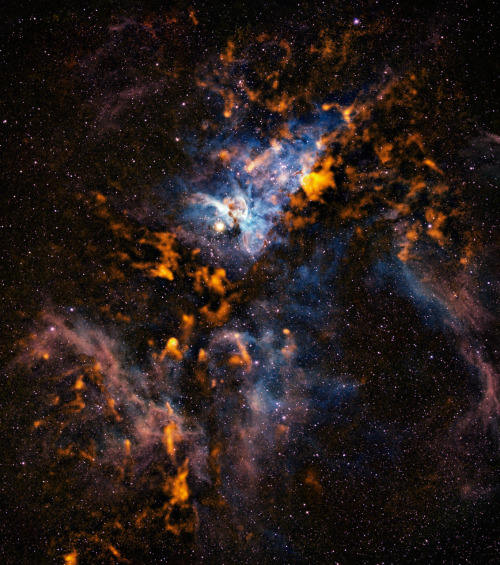The Cool Clouds of Carina
Observations made with the APEX telescope in submillimetre-wavelength light at a wavelength of 870 µm reveal the cold dusty clouds from which stars form in the Carina Nebula. This site of violent star formation, which plays host to some of the highest-mass stars in our galaxy, is an ideal arena in which to study the interactions between these young stars and their parent molecular clouds.
At this wavelength, most of the light seen is the weak heat glow from cosmic dust grains. The image therefore reveals the clouds of dust and molecular gas — mostly hydrogen — from which stars may form. At -250°C, the dust grains are very cold, and the faint glow emanating from them can only be seen at submillimetre wavelengths, significantly longer than those of visible light.
The APEX LABOCA observations are shown here in orange tones, combined with a visible light image from the Curtis Schmidt telescope. The result is a dramatic, wide-field picture that provides a spectacular view of Carina’s star formation sites. The nebula contains stars with a total mass equivalent to over 25,000 Suns, while the mass of the gas and dust clouds is that of about 140,000 Suns.

No comments:
Post a Comment